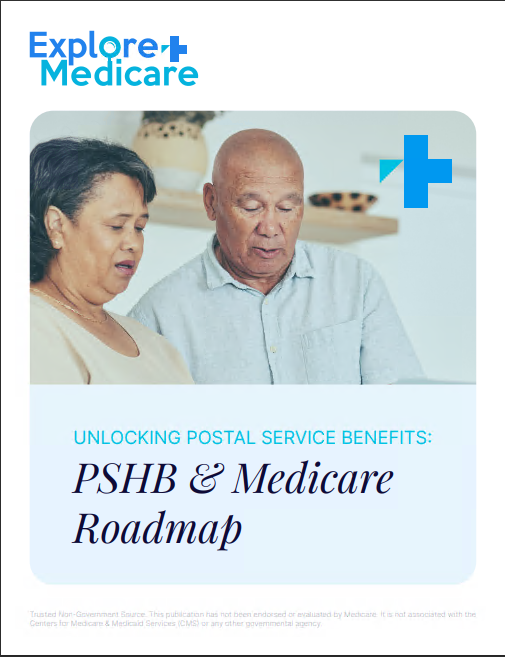Key Takeaways
-
Medicare enrollment comes with time-sensitive decisions, and missing deadlines can lead to lifelong penalties or delayed coverage.
-
You need to understand the differences between the parts of Medicare and how they affect your costs, access to care, and coverage options.
Understanding Medicare in 2025
Medicare is a federal health insurance program for people who are 65 or older, certain younger individuals with disabilities, and those with End-Stage Renal Disease (ESRD). In 2025, Medicare continues to offer multiple parts, each with specific coverage areas, eligibility rules, and enrollment timelines. Before you decide to enroll, you need to be crystal clear on what each part does and how it can affect you.
What Medicare Covers (and What It Doesn’t)
Medicare is divided into several parts:
Medicare Part A: Hospital Insurance
Part A covers:
-
Inpatient hospital stays
-
Skilled nursing facility care (not custodial)
-
Hospice care
-
Some home health services
For most people, Part A comes with no monthly premium if you or your spouse paid Medicare taxes for at least 40 quarters. In 2025, the Part A deductible is $1,676 per benefit period.
Medicare Part B: Medical Insurance
Part B covers:
-
Doctor visits
-
Outpatient care
-
Preventive services
In 2025, the standard monthly premium for Part B is $185, and the annual deductible is $257. After meeting the deductible, you typically pay 20% of the Medicare-approved amount for covered services.
Medicare Part C: Medicare Advantage
This is an alternative to Original Medicare offered by private insurers. It includes all services under Parts A and B, and often includes additional benefits. These plans vary widely and follow different cost-sharing structures, which you must compare carefully.
Medicare Part D: Prescription Drug Coverage
Part D helps cover the cost of prescription drugs. In 2025, the maximum deductible is $590, and there is now a $2,000 annual cap on out-of-pocket drug costs, providing significant protection.
Who Is Eligible for Medicare in 2025?
You are eligible for Medicare if:
-
You are 65 or older
-
You are under 65 and have received Social Security Disability Insurance (SSDI) for 24 months
-
You have ALS or ESRD
You must also be a U.S. citizen or a legal resident for at least five consecutive years.
Enrollment Periods You Need to Know
Missing your Medicare enrollment window can lead to penalties and delayed coverage. Be sure to understand these enrollment periods:
Initial Enrollment Period (IEP)
-
Starts 3 months before your 65th birthday
-
Includes your birthday month
-
Ends 3 months after your birthday month
This 7-month period is your first chance to enroll. If you miss it, you may have to wait until the General Enrollment Period.
General Enrollment Period (GEP)
-
Runs from January 1 to March 31 every year
-
Coverage starts the following month after enrollment
Use this if you missed your IEP. Be aware that penalties may apply.
Annual Enrollment Period (AEP)
-
Runs from October 15 to December 7 every year
-
You can switch or drop Part C and Part D plans
Medicare Advantage Open Enrollment Period (MA-OEP)
-
Runs from January 1 to March 31
-
For those already enrolled in a Medicare Advantage Plan who want to switch to another or go back to Original Medicare
Special Enrollment Periods (SEPs)
These occur when specific life events happen, such as:
-
Losing employer coverage
-
Moving to a new service area
-
Gaining eligibility for Medicaid
Each SEP has its own timelines, usually 2 months after the event.
What Happens If You Enroll Late
Late enrollment can come with permanent consequences:
-
Part A Penalty: If you have to buy Part A and don’t sign up during your IEP, your premium may go up 10% for twice the number of years you were eligible but didn’t enroll.
-
Part B Penalty: A 10% increase in premium for every 12-month period you were eligible but didn’t sign up. This penalty applies for as long as you have Part B.
-
Part D Penalty: Calculated as 1% of the national base premium times the number of full uncovered months you didn’t have creditable drug coverage.
Medicare Doesn’t Cover Everything
It’s crucial to understand what Medicare doesn’t cover so you’re not caught off guard. Items not covered include:
-
Long-term care (custodial nursing home care)
-
Dental care and dentures
-
Eye exams for prescription glasses
-
Hearing aids
-
Routine foot care
You may need to look into separate coverage for these services or budget accordingly.
Costs You Should Expect
Even with Medicare, you’ll still face out-of-pocket costs. These include:
-
Premiums: Monthly payments for Part B, and possibly Part A or D
-
Deductibles: Amounts you must pay before coverage kicks in
-
Coinsurance: Your share of the costs after meeting deductibles
-
Copayments: Flat fees for specific services like doctor visits or hospital stays
In 2025, the introduction of the $2,000 cap on Part D drug expenses helps, but you still need to plan for other costs not limited by law.
Medicare and Employer Coverage
If you’re still working at 65 and have employer coverage, your situation may be different. Consider:
-
Whether the employer has 20 or more employees (Medicare may be secondary)
-
How prescription drug coverage compares to Part D (it must be “creditable”)
-
When your employer coverage ends (this triggers a SEP)
In most cases, you can delay Part B and Part D without penalty if you have creditable coverage.
How Medicare and Medicaid Work Together
If your income and resources are limited, you may qualify for both Medicare and Medicaid. This is known as “dual eligibility.”
Medicaid can help cover:
-
Medicare premiums
-
Deductibles and coinsurance
-
Services not covered by Medicare, such as long-term care
Programs vary by state, so it’s worth contacting your state Medicaid office if you think you qualify.
The Role of Medigap Plans
Medigap, or Medicare Supplement Insurance, is optional coverage that helps pay for some of the costs not covered by Original Medicare. You must:
-
Be enrolled in both Part A and Part B
-
Apply during your 6-month Medigap Open Enrollment Period, which begins when you’re 65 and enrolled in Part B
After this window, you may be denied coverage or charged more based on health conditions.
What You Should Ask Yourself Before Enrolling
Before you sign up, ask yourself:
-
Do I need prescription drug coverage?
-
Do I want access to any doctor or prefer a network?
-
How often do I visit specialists?
-
Do I travel frequently or live in multiple states?
-
What health services do I need most?
These questions will guide you toward a Medicare path that fits your needs.
Preparing for Annual Changes
Medicare changes every year. In 2025, several adjustments have already occurred:
-
The Part D out-of-pocket cap has been introduced
-
Part B premiums and deductibles have increased
-
The number of Special Needs Plans (SNPs) has expanded
Make it a habit to review your Medicare coverage annually during AEP. Look for updates in costs, benefits, and network providers.
Where You Can Get Help
Medicare can be complex. You can get assistance from:
-
Licensed agents who are trained to explain your options
-
Official Medicare publications and online resources
Take Control of Your Medicare Decisions
Choosing Medicare coverage isn’t something to rush. You need to understand each part, weigh your costs, know your deadlines, and assess your health care needs. With the 2025 changes in mind, you can make more informed choices.
If you need help understanding how Medicare works or which choices are right for you, speak to a licensed agent listed on this website for personalized advice.









